When SMBs master psychographic segmentation in marketing, campaigns shift from generic to personal. The result is higher engagement, better conversions and sales teams that know which leads to prioritize.
In this article, you’ll learn the definition of psychographics in marketing and how to gather actionable insights into your customers’ motivations, interests and values. You’ll see how to turn that information into practical segments that power your sales and marketing strategies.
Key takeaways from psychographic segmentation in marketing
Psychographic segmentation groups customers by motivations and values, not just consumer behavior or demographic data.
Combine surveys, behavioral data and social listening to build accurate customer segments.
Create three to five segments that are specific enough to guide messaging but broad enough to be actionable.
Pipedrive makes it easy to organize psychographic segments with custom labels and track which segments drive the best results – try it free for 14 days.
What is psychographic segmentation in marketing?
Psychographic segmentation divides your audience by their attitudes, interests, motivations and lifestyle.
The purpose is to group people by what matters to them most, so you can personalize campaigns and messages based on their values.
On the other hand, traditional customer segmentation focuses on surface-level data. Demographics groups customers by information like their age or location. Behavioral segmentation groups customers by what they do, like their purchase history or app usage.
Psychographics in marketing reveals what drives customers to act. Using this approach helps you:
Improve targeting. Craft messages that resonate with specific motivations and interests.
Increase engagement. Connect with audiences on a deeper level, boosting clicks, email opens and interaction.
Drive better conversion. Align campaigns with customer values to boost purchases and upselling opportunities.
Align sales strategy. Help sales prioritize leads and tailor sales outreach based on segment insights.
Boost campaign efficiency. Reduce wasted spend by focusing on the most relevant audience segments.
Psychographics example in marketing: A fitness app targets users who are wellness-focused over those who are achievement-focused. Health-conscious users get messaging about “track your nutrition and optimize your wellness journey”. Status-driven users see “join the community of high-performers and show off your achievements”.
The marketing is for the same app with the same features, but it uses completely different approaches based on what motivates each segment.
Now that you understand what psychographics are in marketing, learn how to extract valuable data to reach and convert your audience.
How to collect psychographic data
To ensure the effectiveness of your psychographic segmentation, you need solid data.
Here are three data collection methods you can combine for a complete picture of your target audience.
Surveys and customer feedback
Questionnaires allow you to ask customers directly about their values, interests and lifestyle choices at scale.
Use tools like SurveyMonkey or Typeform to create and send customer surveys. Ask respondents no more than 10 questions to increase your completion rates (how many people finish your survey).
A mix of quantitative and qualitative questions gives you measurable patterns and a deeper understanding of customer motivations. For example:
Quantitative questions (e.g., ratings) | Qualitative questions (e.g., open-ended questions) |
On a scale of 1–10, how important is sustainability when you make a purchase? | What values matter most when you decide to buy from a company? |
Rank these motivations in order of importance: saving time, saving money, quality and brand reputation. | What motivated you to choose [product/service]? |
On a scale of 1–10, how adventurous would you describe yourself as a consumer? | Describe a time when [product/service] helped solve a challenge for you. |
Customer interviews or small focus groups can add depth to survey findings. Speaking directly with your ideal customers helps uncover the stories and emotions behind their choices. The valuable insights you glean make your segments more accurate.
Behavioral tracking and analytics
Rather than segmenting your customer base by how often they use your product or what features they use most, leverage behavioral tracking to uncover patterns that reflect their motivations.
Visiting pages about sustainability might reflect eco-friendly values. Downloading whitepapers might show that a customer feels motivated by learning.
If you use a customer relationship management (CRM) tool, you can link it to behavioral tracking to help you capture these psychographic signals.
For example, Pipedrive integrates with the customer journey tracking and scoring tool Salespanel:
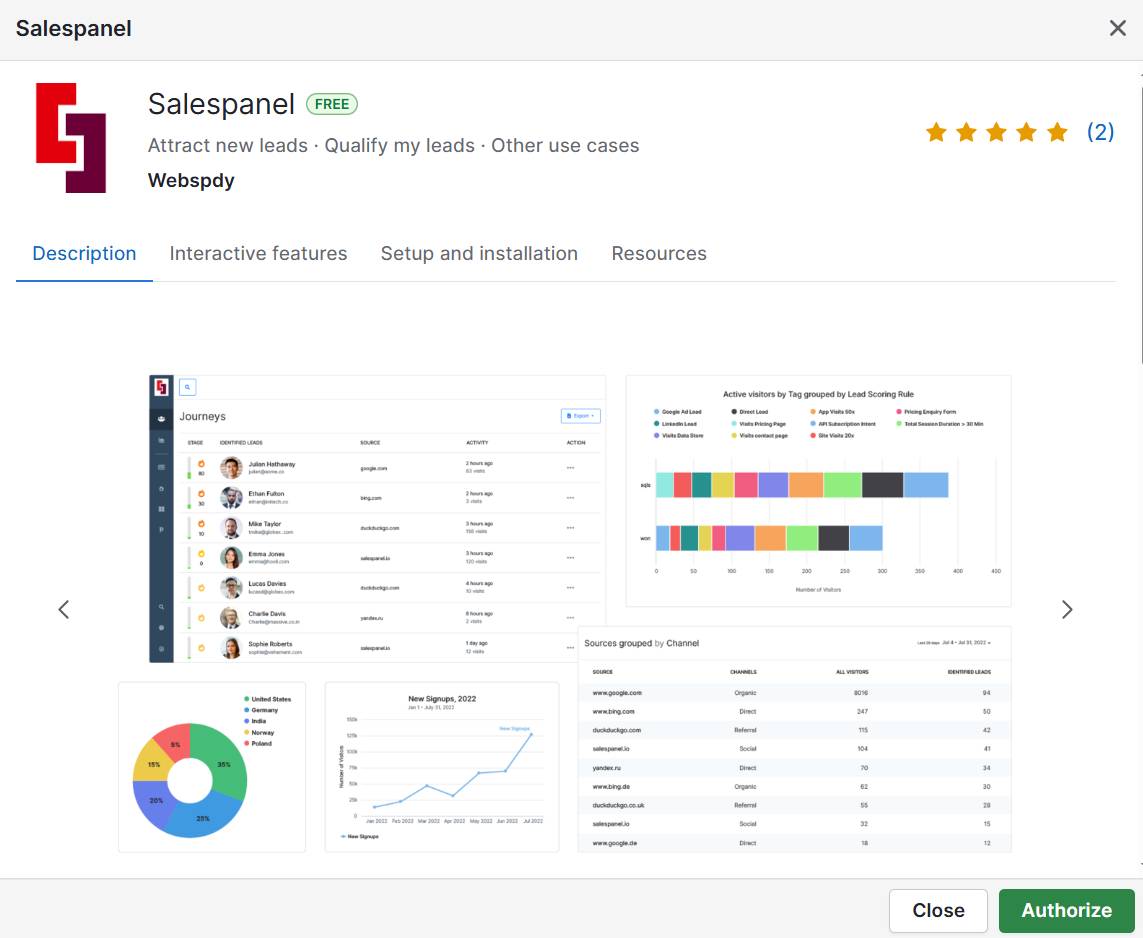
The integration tracks website activity like page visits and downloads, then sends the data to your CRM system.
Social media and third-party data sources
Monitoring conversations your customers have outside of your business helps you understand what drives them in their own words.
Here’s how to do it:
Track relevant mentions and topics with tools like Sprout Social or Hootsuite Insights
Explore forums like Reddit or see what questions people are asking on Quora
Tap into industry reports, related blogs and public market research to spot recurring topics
Say startup product managers are one of your main buyer personas. You follow top creators on LinkedIn and the product management Subreddit, noticing lots of conversations around pain points like budgeting and pricing strategy.
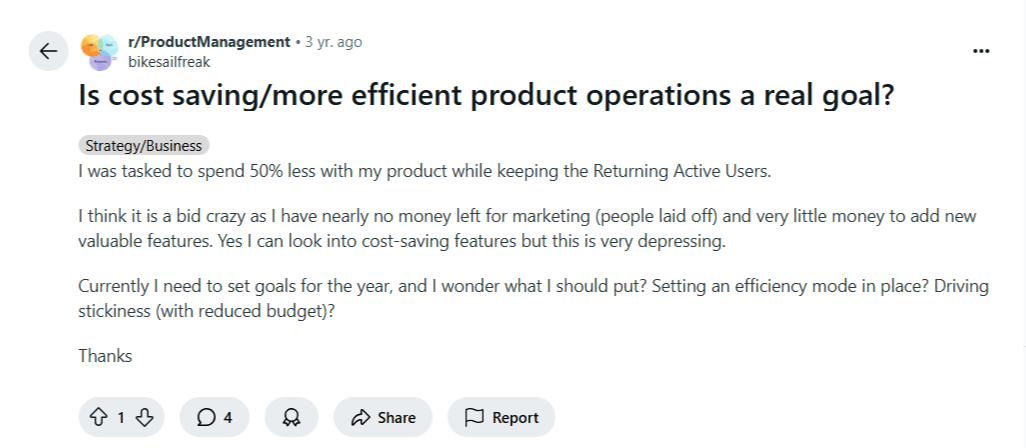
This information suggests that a “budget-conscious” or “savings-driven” segment could work for your target market.
How to analyze your data to create psychographic segments
Once you have your customer data, follow these four steps to decide what your psychographic segments will be.
1. Identify your customers’ values, interests and motivations
Gather your data in one place, like a Google Doc or Google Sheet, to make it easy to search.
If you’ve collected open text like social media comments or qualitative survey answers, look for repeated words and sentiments
For quantitative survey data, examine the most common or highest-rated responses. Map those top reactions to categories (e.g., if 70% rank “saving time” as important, include that under the motivation category)
Sort your common topics into groups like values (e.g., sustainability, customer trust), interests (e.g., fitness, tech trends) and motivations (e.g., saving time, growing sales revenue)
As this exercise can be time-consuming, you might prefer to feed your data into ChatGPT to sort responses into categories and highlight recurring patterns. Just make sure to check the output for accuracy.
2. Group your customers into actionable segments
Once you’ve categorized your data into values, interests and motivations, look for combinations that naturally occur together.
Example: Imagine you run a project management SaaS platform where 70% customers rank “saving time” as very important. In open answers, many also mention frustration with complex tools. All this feedback points to a clear psychographic profile: efficiency-focused users who want simple solutions.
Choose specific groups to guide messaging, while ensuring they’re broad enough to reach a meaningful number of customers.
For each potential segment, write a brief customer profile that includes:
Their primary motivation (e.g., saving time)
Key values (e.g., simplicity, ease of use)
Common interests or behaviors (e.g., prefer streamlined tools)
Audience size (aim for at least 15-20% of your customer base)
You can store these profiles in a shared Google Doc for easy team access or create a simple spreadsheet with columns for each segment attribute.
Use the document as your reference guide when creating personalized marketing campaigns. Visibility helps ensure everyone on your team understands what drives each target segment.
Note: The most powerful segments combine multiple psychographic segmentation variables – such as values, personality traits and lifestyle factors – rather than values alone. The richer your variable mix, the more targeted your messaging will be.
3. Organize your segments
Once you’ve defined your psychographic segments, organize them so your team can act on them.
Simple options include spreadsheets or email lists. A CRM like Pipedrive makes it easier to track engagement and group contacts by segment.
In Pipedrive, you can create contact labels to assign each lead or customer to a segment. For example, you might add labels for “Efficiency-focused users” or “Value-conscious buyers”.
Then, you can assign labels to your contacts in the list view or the contact detail view.

The label functionality helps sales and marketing teams see at a glance which customers belong to which segments.
4. Assign customers to segments
Now that you’ve defined your segments, decide which customers belong to each one.
Start by reviewing individual customer data against your segment profiles. Look at any survey responses, behavioral patterns and qualitative feedback you have on file to see which segment they match best.
Some customers won’t fit neatly into any segment, and that’s okay. Others may not have in-depth data available to make a clear assignment. Focus on the clear matches first, using these segments as your test group for targeted campaigns.
As you gather more data over time, assign the remaining customers or create additional segments if needed.
Note: Once you establish your segments, you can group new customers from the start by adding one or two psychographic questions to your onboarding process or lead capture forms.
Simple questions like “What matters most when choosing a solution like ours?” can quickly identify which segment new prospects belong to.
The following example shows how campaigns for psychographic segments work in practice.
A real example of psychographic segmentation
The North Face often runs ads showing tough climbs and rugged landscapes, aimed at hardcore outdoor athletes.
The brand used a different angle in this city storefront: “Shoes that help your mind wander.”

Here, the target isn’t mountain climbers. It’s city workers craving balance and relief from office life. The mountains are still in the background, but the hook is about clearing your head, not conquering a peak.
By shifting the message, The North Face connects with stressed professionals who see the outdoors as recovery, not competition.
SMBs can use the same principles in their own campaigns. Say a boutique business retreat company has two key segments:
Team building-focused. Companies that book retreats for energetic group activities.
Wellness-focused. Companies that prioritize rest and relaxation to reduce employee stress.
The hospitality business could create LinkedIn ads with different visuals and messaging tailored to each segment.
To get the ads in front of the right people, it targets the wellness-focused segment using job titles like “Head of People & Culture” and the team-building segment through team lead roles.
This approach makes for more effective marketing campaigns, though marketing isn’t the only department that benefits from psychographic segmentation.
How insights from psychographic segmentation can support sales
The benefits of psychographic segmentation extend beyond marketing and toward sales teams, too. Here’s how psychographics optimizes your SMB sales operations.
It makes decision-making easier when choosing leads to target
Psychographic segments help sales reps spot which leads are most likely to convert.
Instead of treating all prospects the same way, reps can prioritize people who match personality traits linked to previous successful deals.
Take the efficiency-focused users segment from the project management SaaS example. These customers rank saving time as very important and dislike complex tools. For sales, this means:
They’re more likely to respond to products with simple, intuitive features
Messaging about “quick setup” or “no learning curve” will resonate
They may be strong candidates for products designed around ease of use
In Pipedrive, salespeople can filter by label to find the segment with those psychographic characteristics.
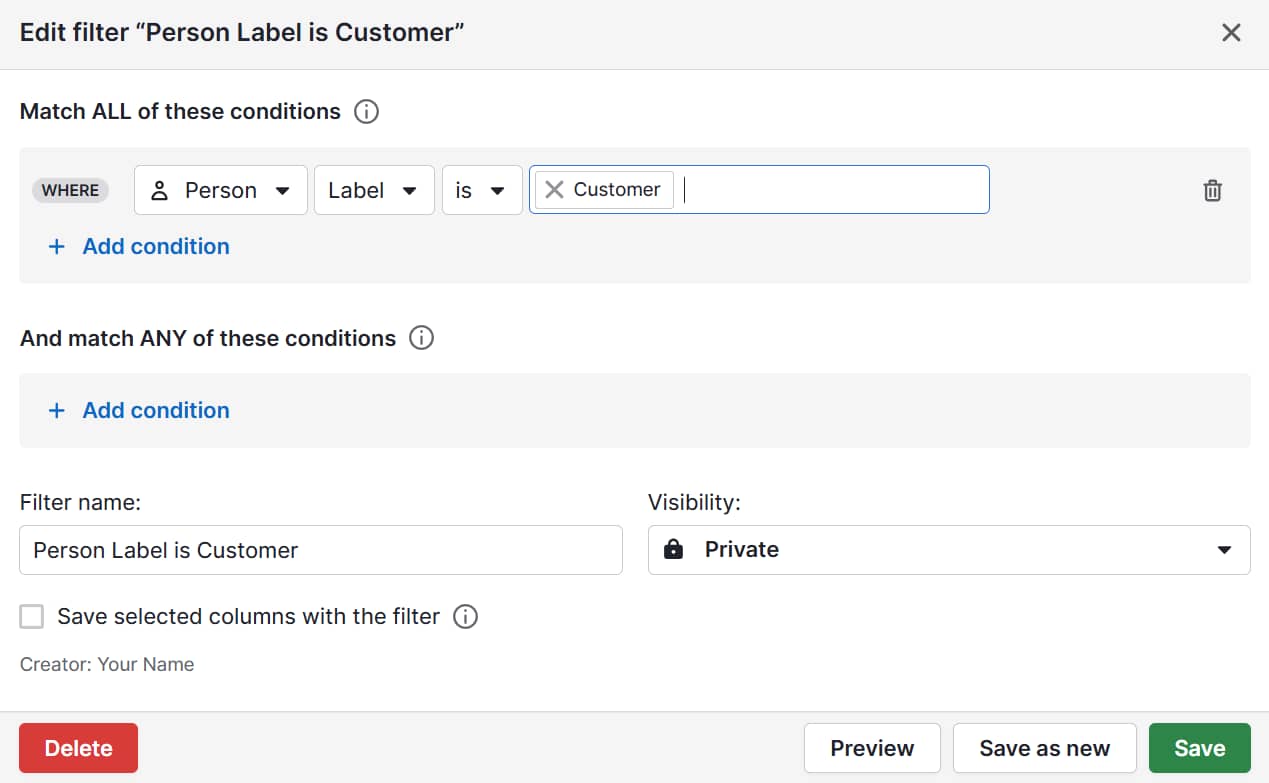
A targeted approach means reps spend less time on mismatched prospects and more time on genuinely interested leads.
It helps sales teams tailor messages and outreach for stronger responses
Once you know which segment a lead belongs to, shape your outreach so it speaks directly to their motivations.
Generic sales pitches are easy to ignore, while personalized messages show prospects you understand what matters to them.
Pipedrive’s AI email writer customizes your emails automatically, suggesting subject lines and messaging tailored to each lead’s psychographic segment.
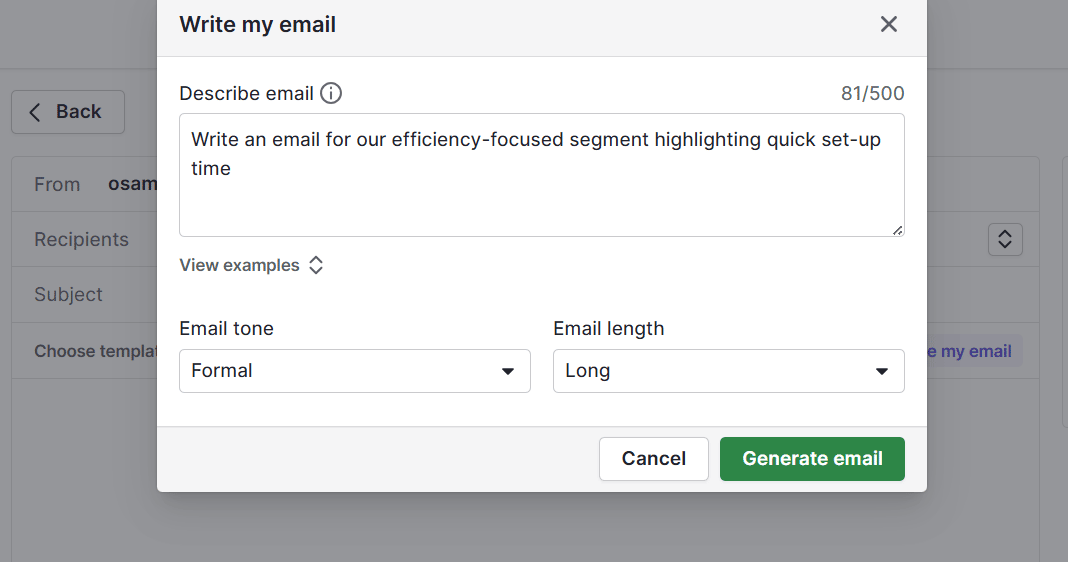
For efficiency-focused users of a project management SaaS product, this could look like:
Sales email subject lines. “Get set up in minutes, not hours” or “Cut admin time in half with [Product]”.
Call openers. “I know many product managers tell us they’re frustrated by tools that take too long to learn. Does that sound familiar?”
Framing the sales demo. Highlight the fast setup process first before covering advanced features.
Psychographic information makes this level of personalization possible in ways that other types of segmentation can’t match.
Want to Learn How to Influence Your Prospect’s Buying Decisions?
It helps align marketing efforts and sales goals
Psychographic segmentation works best when marketing and sales are on the same page.
When your marketing team knows what motivates your best customers, they can design campaigns that attract similar leads. Sales reps then get prospects who are already warmed up by marketing messages that match their priorities.
In Pipedrive, shared segment data makes this handoff seamless:
Marketing can tag new leads by segment (e.g., “efficiency-focused”) as they come in
Sales sees those tags in the CRM and knows which angle to lead with during outbound sales calls
Both teams can track which segments convert best and adjust campaigns or pitches accordingly
The result is fewer wasted leads, faster follow-ups and a smoother customer journey.
To get the most from psychographic segmentation, it’s also important to know what you should watch out for.
6 common mistakes to avoid with psychographic segmentation in marketing
Psychographic segmentation isn’t an exact science. Your approach will take some trial and error, but here are some key mistakes to avoid.
1. Creating too many micro-segments
If a segment is too small, it will be challenging to act on.
The cost of building dedicated marketing strategies, ad sets or email flows for an audience of only a few dozen people outweighs the return.
Small segments also limit testing and measurement: if only 50 people see a message, you won’t know if the results are meaningful.
Solution: For SMBs, three to five well-defined psychographic segments usually strike the right balance. That’s enough to capture meaningful differences in motivations without making campaigns unmanageable.
2. Assuming psychographic traits never change over time
Customer interests and motivations aren’t fixed.
Someone who values simplicity today might later prioritize sustainability or advanced features as their circumstances or market trends shift.
Ensure your segments are always accurate by:
Reviewing your data every six to 12 months using new survey responses, behavioral trends and social listening insights
Updating your messaging and campaigns when you notice shifts in attitudes or interests
Keeping your segments up to date ensures your marketing and sales efforts stay relevant.
3. Using assumptions or stereotypes instead of real customer insights
It’s tempting to rely on gut feeling or stereotypes when creating segments, especially if data feels incomplete or time-consuming to collect.
However, assumption-based segments rarely reflect true customer motivations, which can backfire.
Take the earlier project management SaaS example. Say the marketing team assumes that customers value advanced new features, not simplicity, as the survey data shows.
The risks are several:
Campaigns might miss the mark. Ads and emails highlighting complex features could confuse or overwhelm the audience
Engagement can drop. Customers ignore messages that don’t resonate with their priorities, lowering click-through, email open and engagement rates.
Sales teams waste effort. Reps spend time pitching solutions that don’t align with their leads’ needs, slowing conversions
Marketing and sales risk misalignment. Teams work off incorrect assumptions, creating inconsistent messaging and a disjointed customer experience
Instead, base your segmentation on real customer data – survey responses, behavioral patterns and qualitative feedback – to ensure your campaigns and sales efforts hit the mark.
4. Overlooking the role of behavior and purchase data alongside psychographics
Psychographics show why customers act, but buying behavior shows what they actually do.
Combining the two makes your segments more accurate and actionable, so it’s essential to map psychographic traits to measurable actions.
For instance, for your efficiency-focused SaaS segment, track which users visit quick-start guides, download productivity whitepapers or open emails with time-saving tips. Each behavior will confirm the segment’s motivation.
Over time, notice which behaviors consistently align with each psychographic segment. This data lets you tailor messaging, campaigns and sales outreach with confidence.
Pipedrive in action: Digital analytics company Quru used Pipedrive’s integration with Leadfeeder to track prospects’ website activity and tailor outreach. By aligning messaging with visitor behavior, Quru increased its deal win rate from 36% to 40%.
As CEO Steve Jackson explains, “People don’t mind being sold to if you solve a relevant problem they have or if you raise an issue they weren’t yet aware of.”
5. Not connecting psychographic insights to measurable business outcomes
Segments only matter if they drive measurable business results, like:
Higher conversion rates
Increased customer retention
More upsells
Greater customer loyalty
While tracking these outcomes informs whether your psychographic segmentation is improving marketing and sales performance, the opposite leaves you in limbo.
Make sure you tie each psychographic segment to specific marketing and sales KPIs.
For example, you know your efficiency-focused SaaS segment values simplicity and fast setup. Use Campaigns by Pipedrive to track whether emails emphasizing quick onboarding increase conversions compared with a generic message.
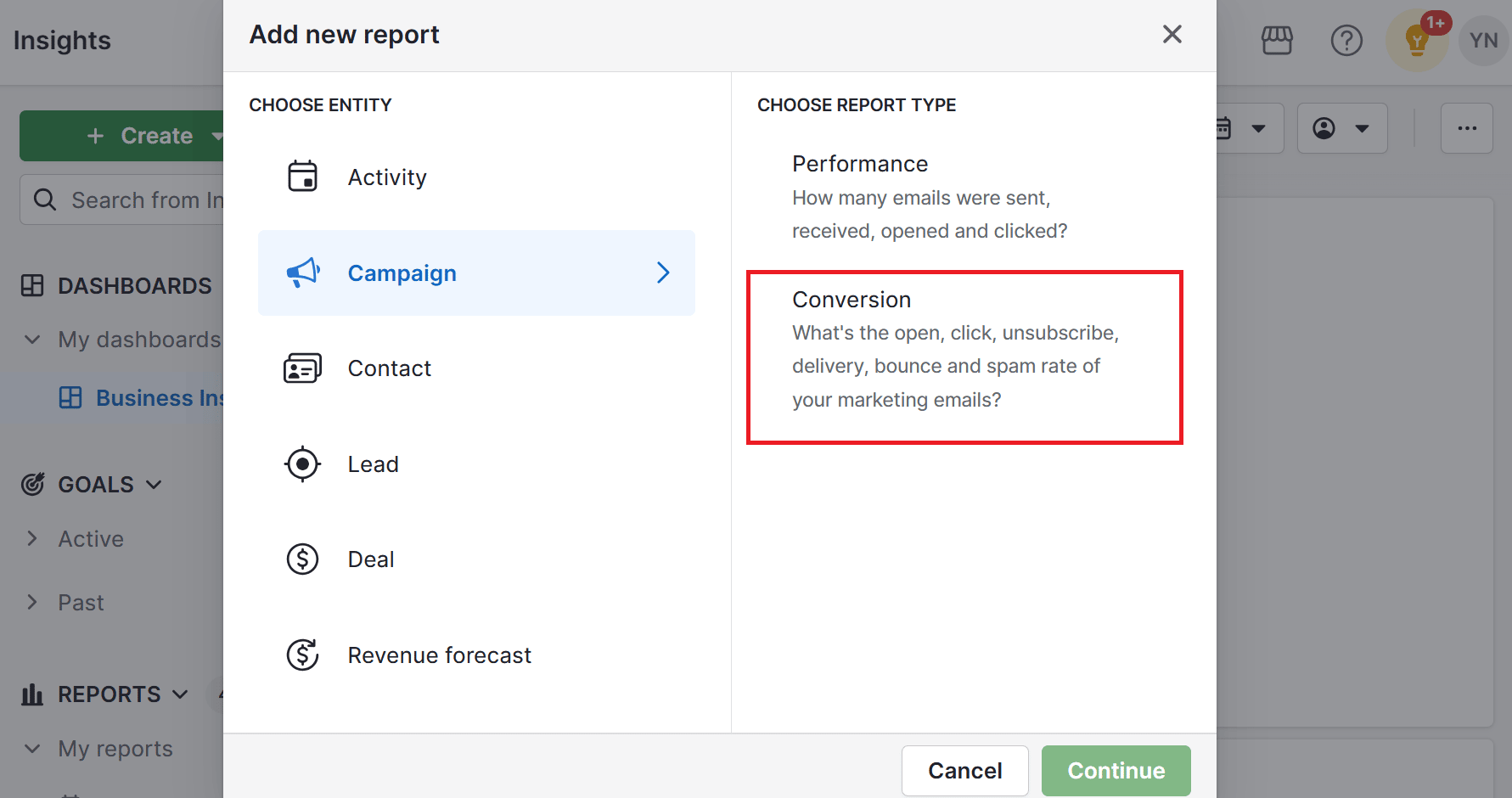
By linking segments to measurable outcomes, you can show the real impact of psychographic insights on marketing and sales performance.
6. Not integrating psychographic segments into your CRM
Failing to incorporate psychographic segmentation into a CRM can make your insights invisible and hard to act on.
When you tag and track segments in a tool like Pipedrive, your marketing team can tailor campaigns for each group. Your sales team sees which leads match which segment.
This visibility enables coordinated messaging and a single source of truth for both teams. You can even set up automated sequences or tasks for each segment, ensuring the right messages go out at the right time.
A CRM also makes reporting easier. You measure which segments drive conversions, retention and upsells, ensuring your segments don’t just sit in a spreadsheet awaiting action.
Final thoughts
Psychographic segmentation gives you insights that demographic segmentation and behavioral segmentation can’t.
By understanding what truly drives your customers, you can create segments that guide messaging, improve targeting and help sales prioritize the right leads.
Try Pipedrive free for 14 days and start using psychographic segments to drive smarter outreach and higher conversions.






